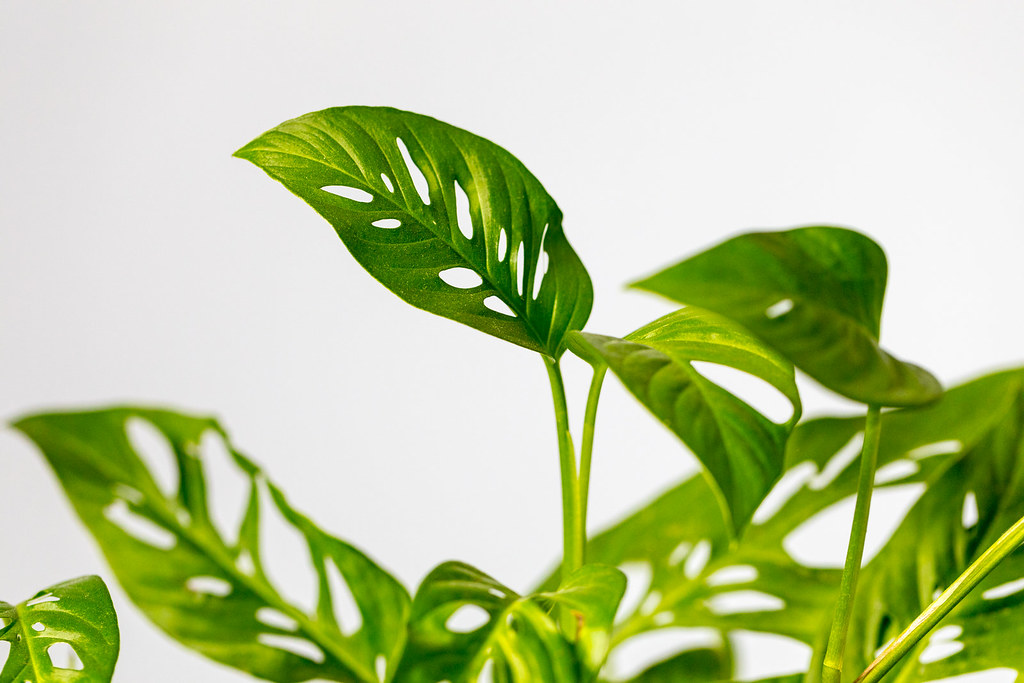Monstera Adansonii, also known as Swiss Cheese Vine, is a tropical plant that’s increasingly popular among houseplant enthusiasts for its unique appearance. Its attractive foliage, characterized by heart-shaped leaves with holes or fenestrations, adds an exotic touch to any indoor or outdoor space. Native to Central and South America, it is part of the Araceae family and shares similarities with the more commonly known Monstera Deliciosa.
What sets Monstera Adansonii apart is its vining nature and smaller leaves, making it an ideal choice for hanging planters or letting it climb a trellis. The plant’s perforated leaves are not just visually pleasing but are thought to help the plant withstand strong winds in its natural habitat.
Growing Monstera Adansonii is relatively simple, given the right conditions. The plant is adaptable but thrives best in well-draining soil with indirect light and high humidity. Here’s an in-depth guide to growing and caring for this beautiful plant.
| Attribute | Details |
|---|---|
| Common Names | Swiss Cheese Vine, Five Holes Plant |
| Botanical Name | Monstera Adansonii |
| Family | Araceae |
| Plant Type | Evergreen perennial |
| Mature Size | Up to 6 feet |
| Sun Exposure | Indirect light |
| Soil Type | Peaty, well-draining |
| Hardiness Zones | 10-11 |
| Native Area | Central and South America |
Monstera Adansonii Care
Monstera Adansonii care revolves around providing the right balance of moisture, light, and nutrients. This tropical vine prefers indirect light, and its soil should be kept evenly moist but not soggy. Providing a humid environment replicates the plant’s natural habitat and encourages healthy growth.
Pruning is essential for controlling the size and shape of Monstera Adansonii. Regularly removing dead or yellowing leaves will maintain its appearance and overall health. Adding a support structure will encourage the vine to climb and create a more vertical growth pattern.
Light Requirement for Monstera Adansonii
Monstera Adansonii thrives in bright, indirect light. Direct sunlight can cause leaf burn, so positioning the plant near an east or north-facing window, or using sheer curtains to diffuse the light, can prevent this problem.
Soil Requirements for Monstera Adansonii
A peaty, well-draining soil mix is ideal for Monstera Adansonii. A blend of peat, perlite, and pine bark provides the necessary drainage and retains just the right amount of moisture.
Water Requirements for Monstera Adansonii
Watering Monstera Adansonii requires a balanced approach. Keep the soil evenly moist, but not soggy, and allow the top inch of soil to dry out between waterings.
Temperature and Humidity
Monstera Adansonii prefers temperatures between 65-80°F (18-27°C). High humidity, around 60-80%, is also ideal. Using a humidifier or placing the plant near other humidity-loving plants can achieve this.
Fertilizer
Feed Monstera Adansonii with a balanced liquid fertilizer diluted to half-strength every 4-6 weeks during the growing season.
Pruning Monstera Adansonii
Regular pruning helps control the size and shape of the plant. Remove dead or yellowing leaves, and trim long vines as needed to maintain the desired appearance.
Propagating Monstera Adansonii
Propagation can be done through stem cuttings. Cut a vine with a minimum of one node and place it in water or soil. Rooting hormone can encourage faster growth.
How To Grow Monstera Adansonii From Seed
Growing Monstera Adansonii from seed is less common but possible. Plant fresh seeds in a well-draining mix and keep warm and moist. Germination may take several weeks.
Common Pests & Plant Diseases
Spider Mites
Small bugs that can be treated with insecticidal soap.
Leaf Spot
A fungal disease; remove affected leaves and improve air circulation.
Common Problems With Monstera Adansonii
Yellowing Leaves
Often due to overwatering; adjust watering schedule accordingly.
Lack of Leaf Holes
Insufficient light or immaturity; provide more indirect light or allow the plant to mature.
Pro Tips
- Provide a climbing support such as a moss pole to encourage vertical growth.
- Mist the leaves regularly to maintain humidity or place on a pebble tray with water.
- Keep away from drafts and sudden temperature changes.
- Use a balanced liquid fertilizer for optimum growth.
- Rotate the pot periodically to ensure even growth.




